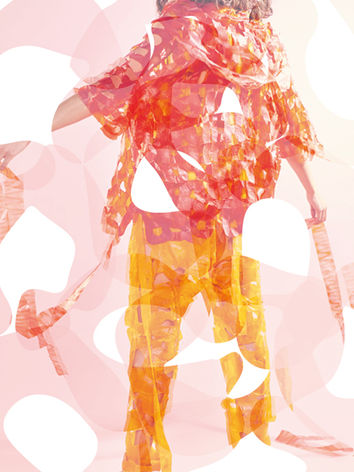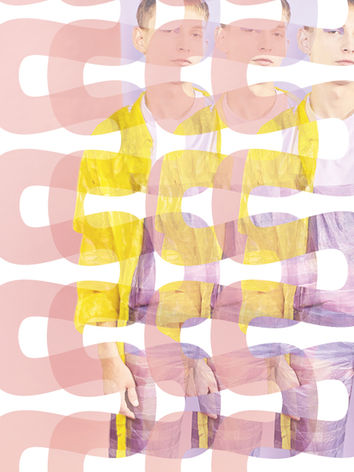
[credits:] Paulina Hildesheim www.paulinahildesheim.com
RETHINK;REGROWING;RECONNECT
re;
2019/Masterprojekt
RETHINK;REGROWING;RECONNECT
re;
2019/Masterprojekt
RETHINK;REGROWING;RECONNECT
re;
2019/Masterprojekt
RETHINK;REGROWING;RECONNECT
re;
2019/Masterprojekt
RETHINK;REGROWING;RECONNECT
re;
2019/Masterprojekt
RETHINK;REGROWING;RECONNECT
re;
2019/Masterprojekt
RETHINK;REGROWING;RECONNECT
re;
2019/ master project
HINTERGRUND
Der statistische >Earth-Overshoot-Day< bezeichnet das jährliche Datum, an dem die Kapazität nachwachsender Rohstoffe erschöpft ist.
Herunter gebrochen zeigt sich der Grund hierfür in der wachsenden Bevölkerungszahl, mit wachsenden Konsumverhalten, in Relation zur statischen Landoberfläche der Erde.
Diese Entwicklung zeichnet einen Interessenkonflikt, um die Kapazitäten des Planeten ab und in weltweiten Protesten manifestierten sich die Forderungen nach einer Verlagerung der Prioritäten in allen Wirtschaftsbereichen.
Für die ästhetische Ökonomie, in der sich die Mode-und Textilbranche platziert, zeigt sich vorherrschend die Forderung nach >gesundschrumpfens< des gesamten Sektors.
Jedoch: In der Textil- und Bekleidungsindustrie arbeiten ca. 60 Millionen Menschen *** & steht unter stetigem Wachstum. Jedes Jahr verdoppelt sie ihre Produktion. Die Folgen einer drastischen Reduktion der Produktion als Antwort auf umwelttechnische Probleme könnte eine Verschiebung in den sozialen/gesellschaftlichen Bereich bewirken.
Weiterhin werden die Problematiken der Branche nicht durch eine Reduktion der Produktion gelöst, solange das Produkt in seiner Gesamtheit als Gefährdung existiert.

black friday & friday for future?
BACKGROUND
The statistical >Earth Overshoot Day< indicate the annual date on which the capacity of renewable materials is exhausted.
The reason for this can be seen in the growing population, with growing consumer behaviour, in relation to the static land surface of the earth.
The existence of this date represents a conflict of interest in the capacities of the planet, which is reflected in worldwide protests for a need to shift priorities in all economic sectors.
For the aesthetic economy in which the fashion and textile industry has it´s position, there is the main requirement to >slimming< the entire sector.
But: About 60 million people work in the textile and clothing industry *** & it is under constant growth. The consequences of a drastic reduction in production in response to environmental problems could result in a shift to the social area.
Furthermore, the problems of the industry are not solved by reducing production as long as the product by itself is a threat.

black friday & friday for future?
CONCEPT
rethink;regrowing;reconnect!

[1] rethink!
; An integral rethinking of the production chain became the main topic of this project. Started by using an alternative raw material producer for the production of textile surfaces. By analyzed different alternatives, based on the 5 problematic subject groups, the decision was made to use >Scoby<, a cellulose-producing symbiosis of bacteria and yeast cultures.
[2] regrowing!
; Historically, the materiality of bacterial cellulose is not an innovation. Nevertheless, it is increasingly coming into our focus, because of the ongoing reconstruction to a bio-economy. The manufacturing process is currently still considered as unprofitable for industrial use, but it offers many improvements in the 5 categories of the problematic.
[1]
[2]
NON-TOXIC & BIODEGRADABLE
MOBILE GROWING IN URBAN SPACES
LOW WATER & ENERGY CONSUMPTION
FAST PRODUCTION 2-4 WEEKS
<
[credits:] Paulina Hildesheim www.paulinahildesheim.de
PROGRESS
[credits:]
Christine Sattler ; christinesattler.com
CONCEPT
[3] reconnect!
; This part starts with a series of experimental analyses for the utilization of bacterial nano cellulose as a raw material for textile fabrics. In the end, 2 material-specific properties, which were categorized as it´s deficits, were chosen:
The hydrophilicity of the open-pore fibre structure & the cornification of the cellulose in the drying process.
The developed technology uses the hydrophilicity for colouring with water-based dyes [food colours]. The cornification of cellulose is reduced by the use of glycerin. The material is becoming more flexible. The irreversible part of the cornification [80%] enables segments to be connected to one surface.
Ornamental laser-cut-patterns, created with using the zero-waste method, aestheticise the developed technique.
The cornification of cellulose is also used for a recycling method for the waste during the cultivation of the Scoby. This generates the possibility of creating rigid and opaque surfaces.
[3]

rethink;regrowing;reconnect!
The elaborated manufacturing and design processes manifest themselves in 4 items of clothing and 6 accessories, which reflect the aesthetic play between striking naturalness and the familiar textile context. In their entirety, they create a vision of a positive future for the aesthetic economics.
[credits:] Paulina Hildesheim www.paulinahildesheim.de




LOOKBOOK
[credits:]
master of arts
university of arts berln
photo/ Paulina Hildesheim; paulinahildesheim.de
male model/vincentschneider@vivamodelsberlin
female model/“LARISSA“@IZAIOmanagement
hair & make up/ Kübra Topcu





















